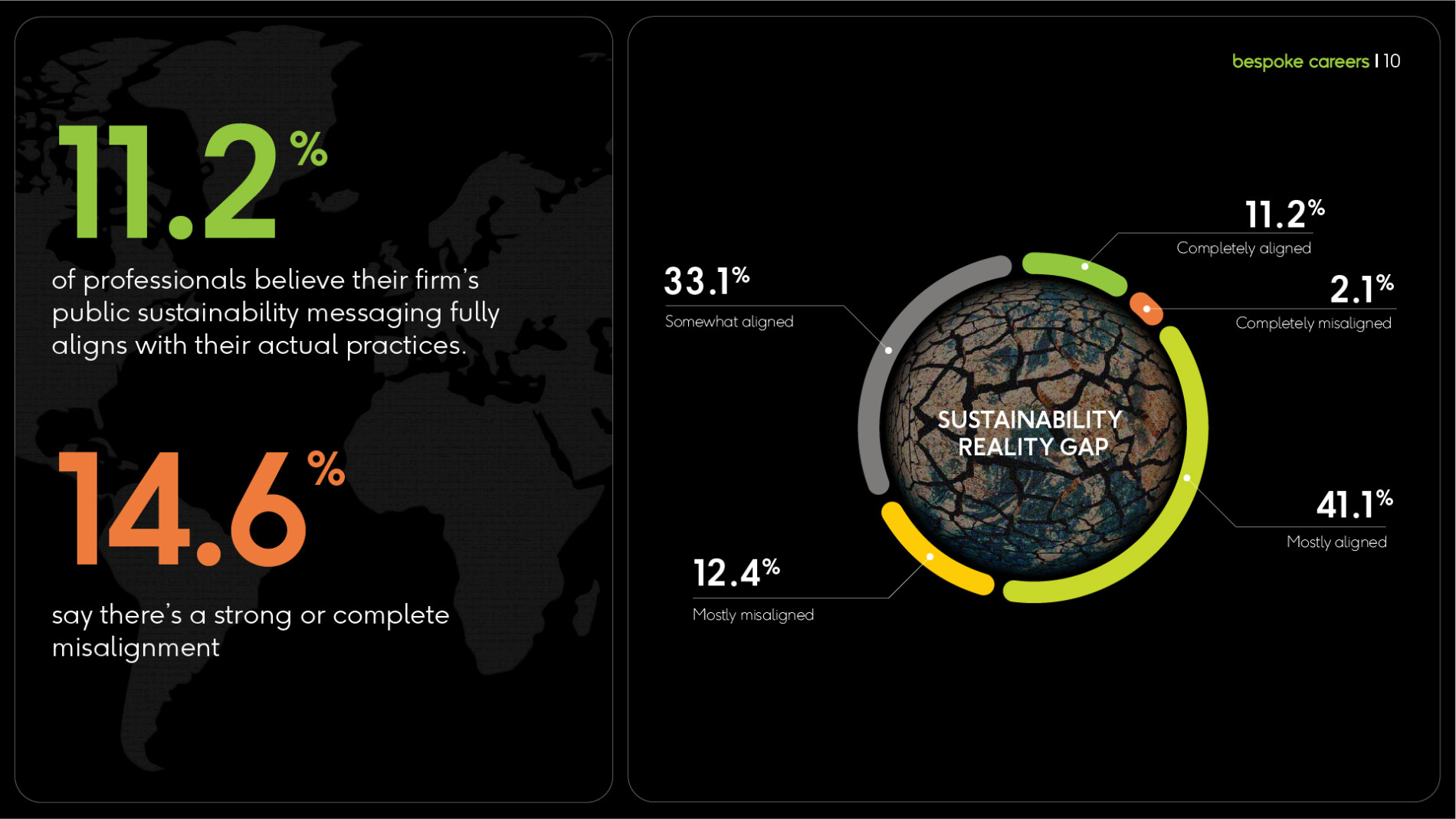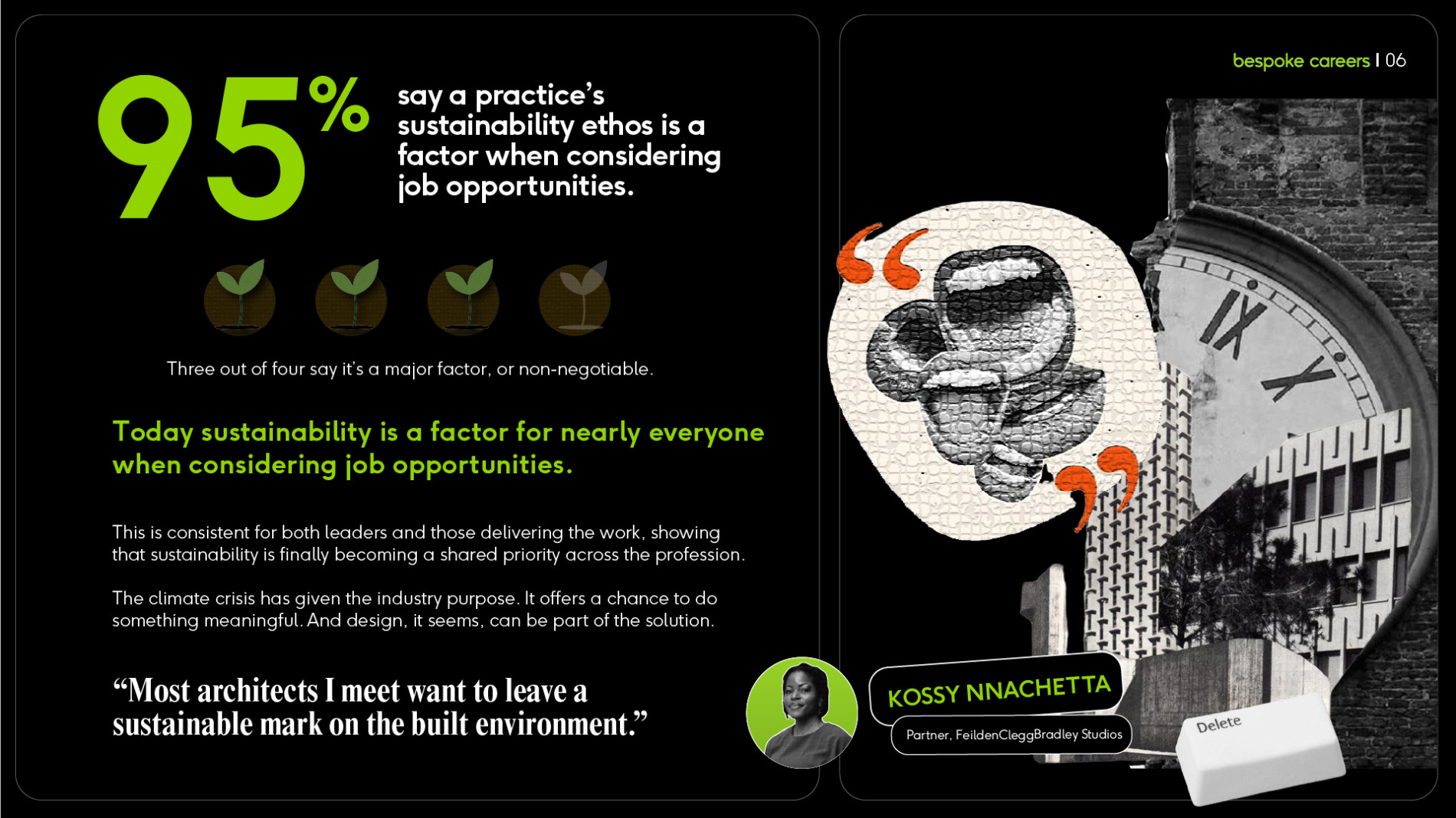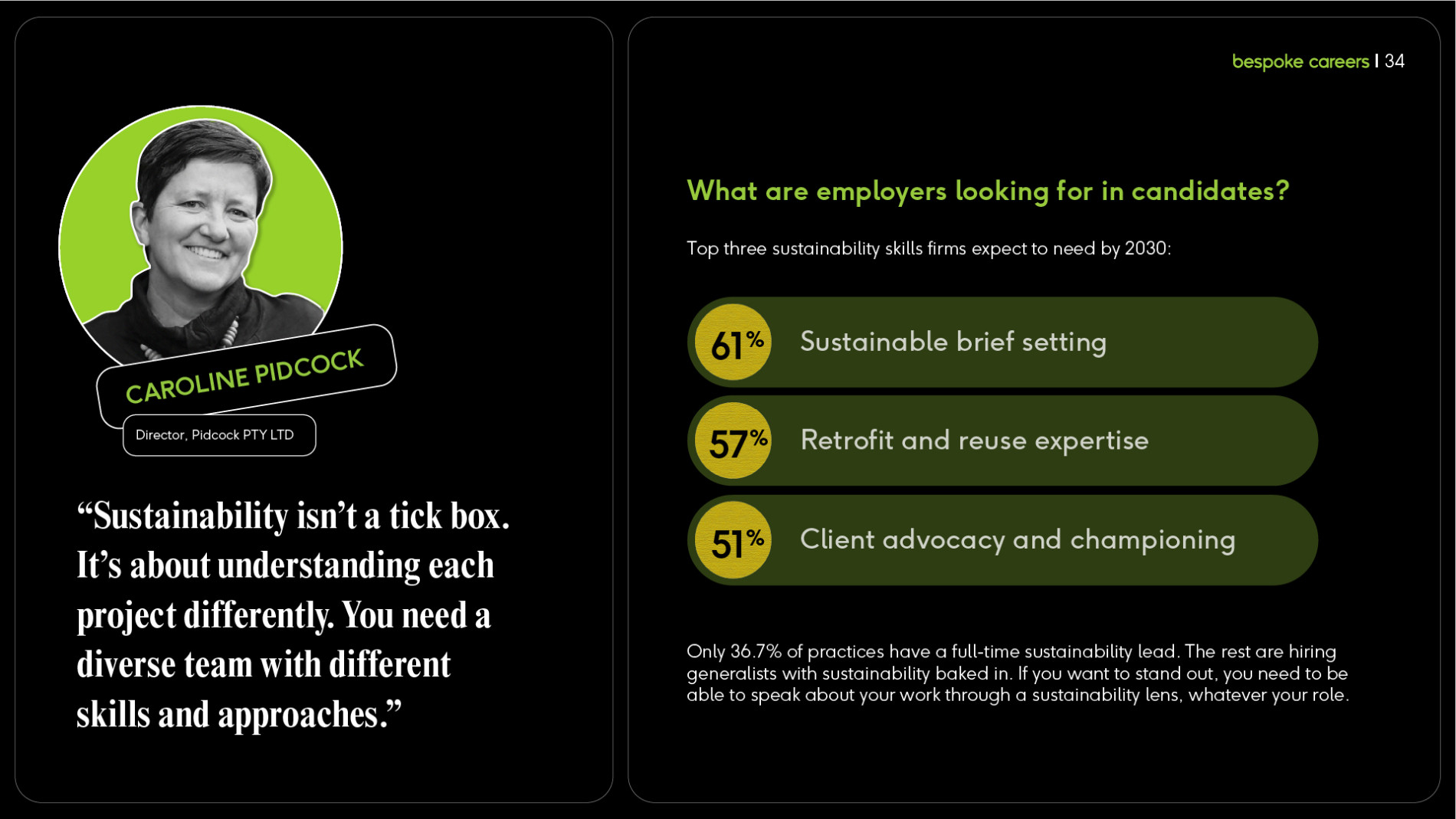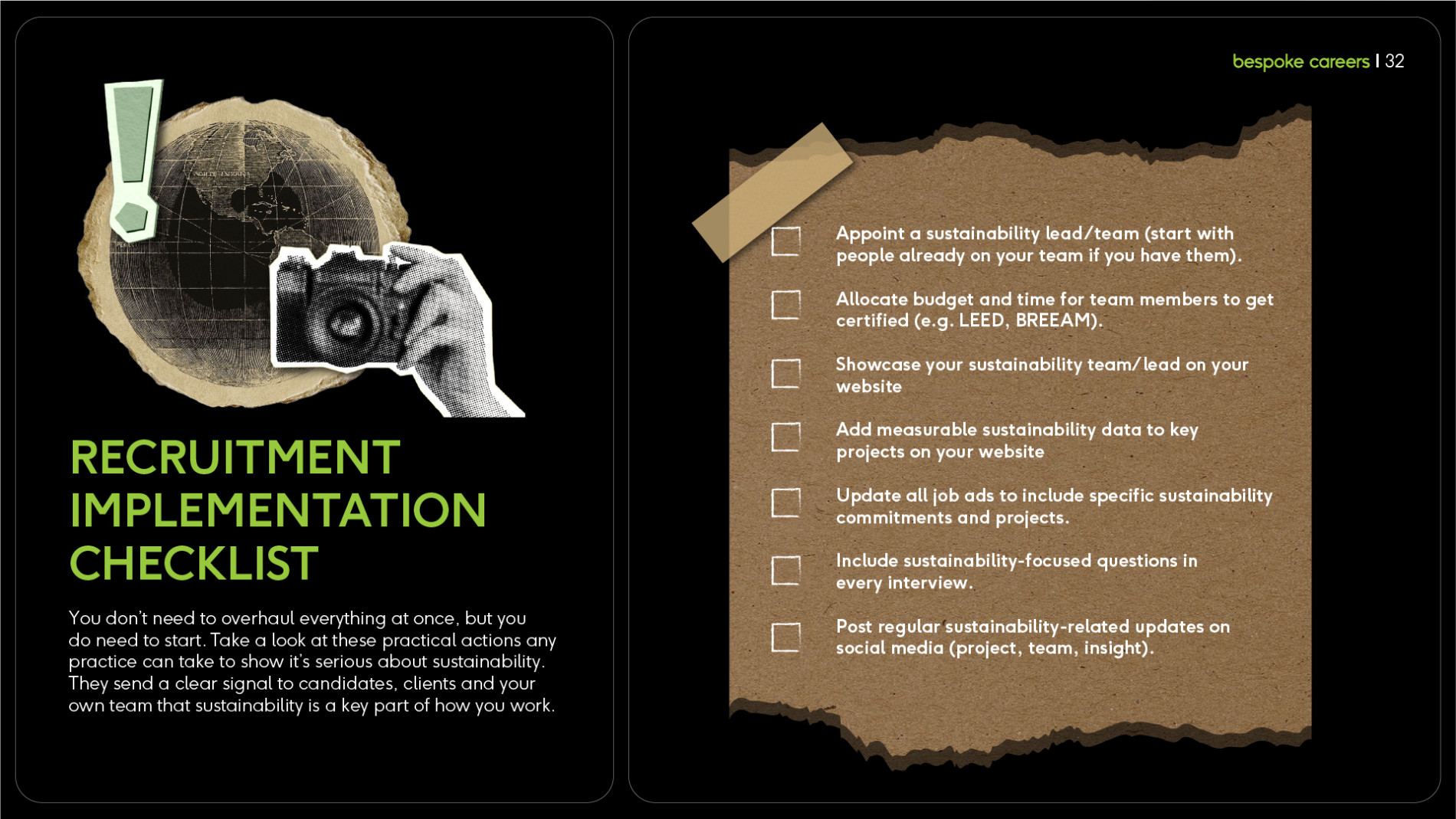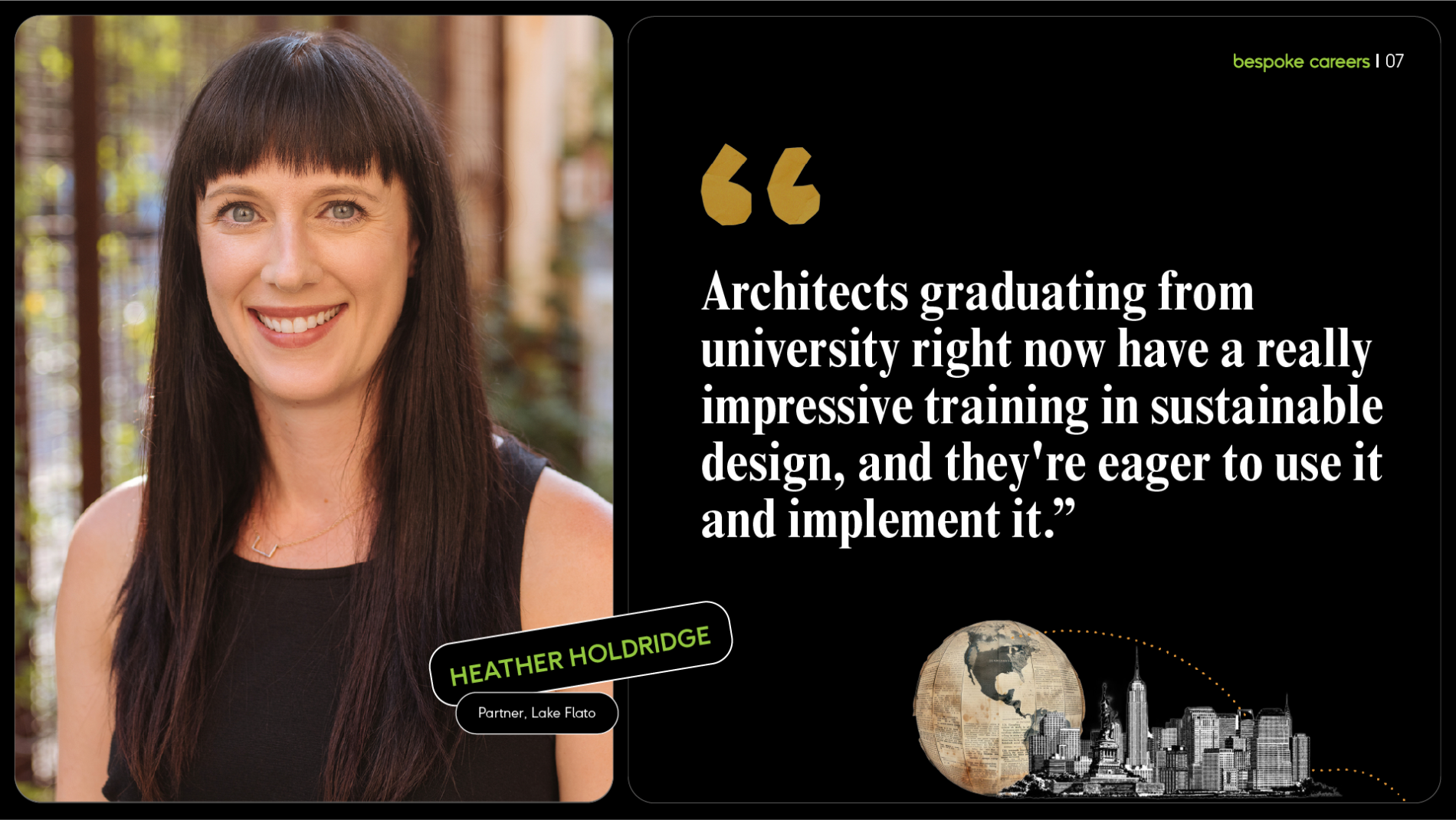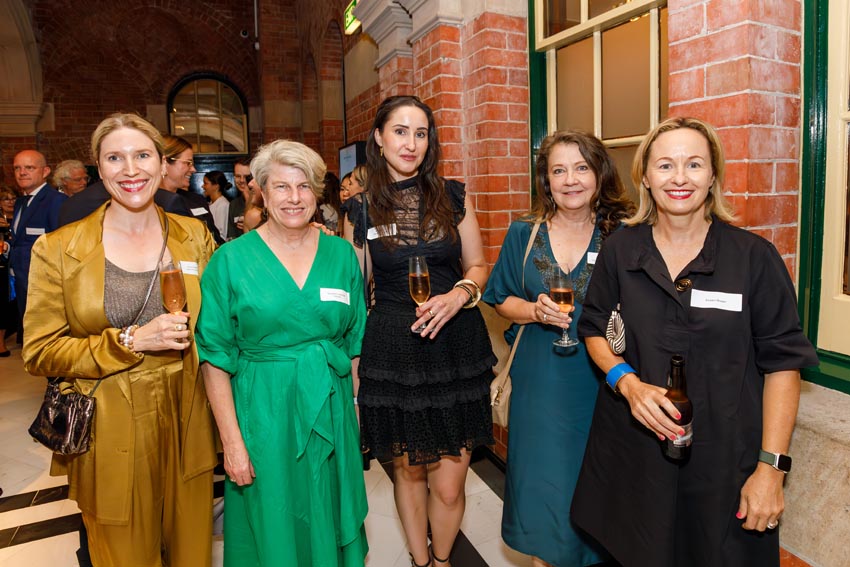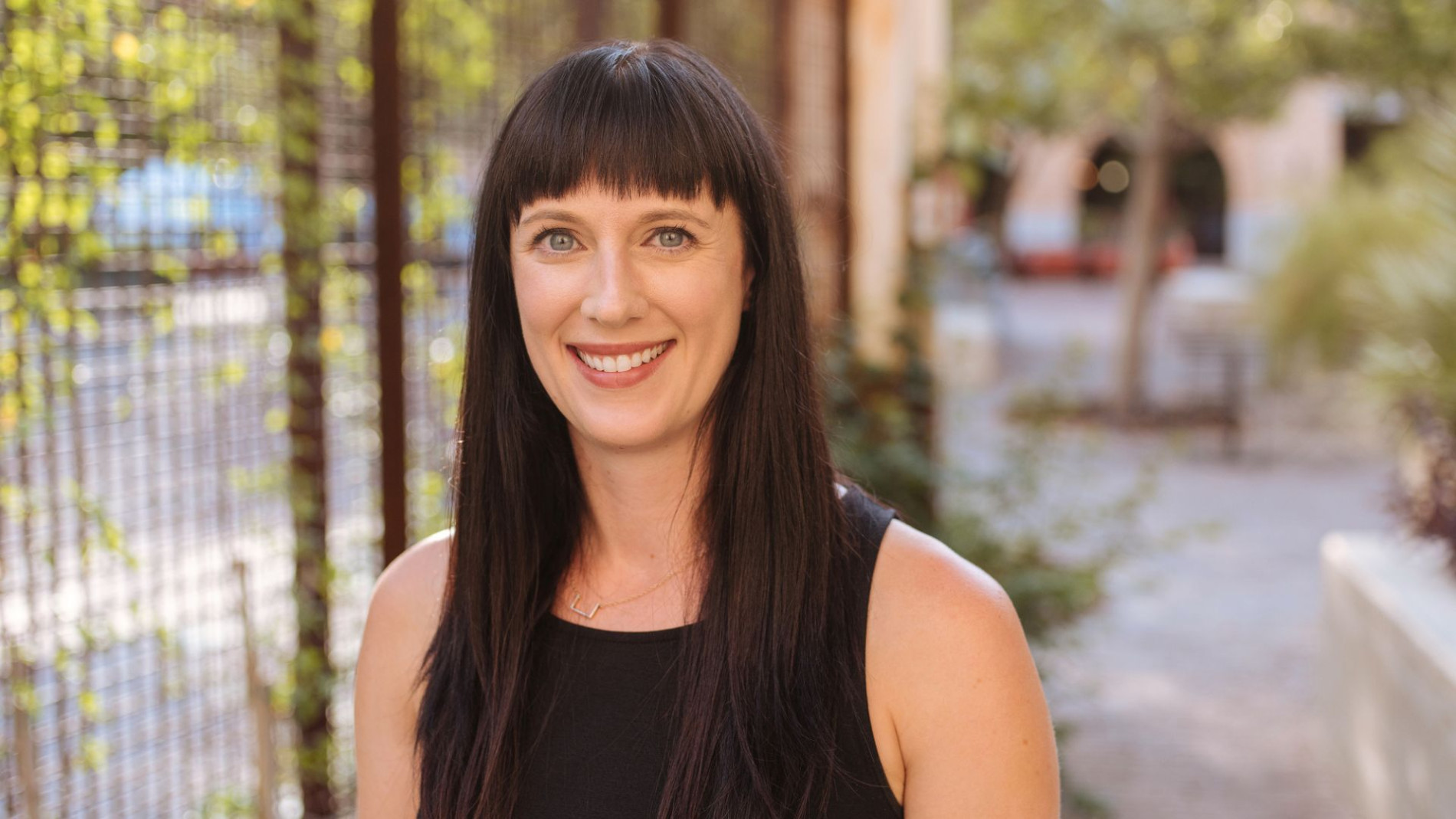
Heather Holdridge: “None of the technical skills matter unless you’re successful with client advocacy.”
Heather Holdridge on design performance, client advocacy, and hiring for curiosity.
Heather Holdridge is director of Design Performance at San Antonio, Texas-based Lake Flato Architects where she has worked for more than 15 years. She founded and developed Lake Flato’s sustainability team which now numbers five architects.
Download the report
Where did you train and how did you find your way into architecture?
HH: I am a mechanical engineer by background. After graduation, I worked at a few different MEP firms, and was pretty disappointed that the conversation was not focused on sustainable design at all. And when I brought it up, it felt like sustainability was a nuisance.
I recognised pretty quickly that architects have a lot of influence over the performance targets that projects meet. While working with a sustainability consulting firm, I met Lake Flato architects. They were really committed to sustainability and performance, and they asked really good questions. When they decided to dedicate a full-time position to sustainability, I was really interested but I had no idea I’d be able to make a career here as a non-architect. We didn’t have it all figured out on day one, but there’s been a lot of trust between us to just develop it as we go.
What’s your elevator pitch on what sustainable design means to you?
HH: We have moved away from the term sustainability. We use ‘design performance’ because we feel it’s a more accurate way to describe how sustainability integrates with building science and research and innovation. Human health and wellbeing have become really key topics and design performance incorporates how we set measurable, data-driven targets and then run any analysis and research that’s needed to meet those targets.
Was there a light bulb moment when you became engaged with architecture and climate change?
HH: The AIA’s Architecture 2030 challenge came out right around the time that I graduated and it really opened my eyes to the impact that buildings have on our environment.
During the 15+ years you’ve been at Lake Flato, how has your role has evolved?
When I joined Lake Flato, it was shortly after the Architecture 2030 challenge was launched. With my background in energy modeling, most of my job initially was to figure out how we could implement energy modeling on all of our projects and integrate that into our design process. Since then our collective understanding of sustainability has evolved to be much more holistic. We’re incorporating not just operational carbon, but embodied carbon, and thinking about landscape and the impacts on human health and wellness, resilience, etcetera.
Lake Flato is a 160-person firm, and I now have five people that support project teams..
Responses to our survey show that 87% of architects and designers feel they have to compromise their sustainability values at work. Have you ever had to do this? And if so, how did you manage it?
HH: As much as I don’t like hearing that people are disillusioned, I love hearing that people want more. And what I’ve observed at Lake Flato, and through my activities at AIA, is that architects graduating from university right now have a really impressive training in sustainable design, and they’re eager to use it and implement it.
It is disappointing that there are not enough firms that are focused on it for people to be able to use those skills. I get a lot of calls from young architects and engineers around the country asking how they turn sustainable design into a bigger part of their role and job description.
Again, from the survey, only 11.2% of architects and designers feel that their firm’s public sustainability messaging completely aligns with actual practice. What’s your experience of that?
HH: I don’t love hearing that people aren’t walking the talk. But I’m glad that we have a lot of designers out there that want to hold our feet to the fire and hold us accountable for the claims that we’re making and publishing. It feels more and more that sustainability has become a competitive angle for architecture firms.
We’re working with more clients and owners that are savvy and sophisticated. So it’s getting harder and harder to get away with making statements that you can’t substantiate with real, built projects and data.
In our survey, 95% of professionals state that sustainable design is a factor when considering job opportunities. 73% say it’s very important or a deal breaker. To what extent would you say that Lake Flato’s reputation in sustainable design has made finding great talent easier?
HH: We have been so fortunate. Most people that are coming to interview with us have never even been to Texas before. They are truly coming to Lake Flato for the firm. We have a reputation for an integrated design and performance approach to projects.
What type of sustainability upskilling takes place within the practice? Do you offer training?
HH: We have a requirement that everyone who joins the firm is expected to get a sustainability credential within six months of hire. So we’ll support them in pursuing LEED or Living Future accreditation. We also have a really robust continuing education program with weekly Lunch and Learns and we organise site visits. My team puts together a monthly sustainability-focused presentation. On any given week, there’s between one to three opportunities for architects to learn beyond their direct project experience.
What do you consider will be the most important sustainable design skills by 2030?
HH: The client advocacy piece is really important. None of the technical skills really matter unless you’re successful with that.
To what extent are sustainability skills or experience a factor in hiring?
HH: It’s a big factor for us. At a minimum, we want to hear that applicants are committed to learning more, even if they don’t have the skills right out of school or with their previous firms. It’s less about having a lot of technical experience and more about just a willingness to learn. When we’re hiring people for my design performance team, I’m not at all concerned about how many Life Cycle Assessments they’ve run or what they know about writing health declarations into specifications. It’s more about being curious and being willing to do the research.
As a sustainability professional, I never get asked the same questions twice. I constantly have to learn new things, and I often can’t rely on projects or research that we’ve done in this office in the past. So it’s about being comfortable reaching out to thought leaders in the profession and to peer firms to learn what you can.
Most firms say they care about sustainability. Is there one actionable step that could be implemented tomorrow to embed sustainable design more into the hiring process and bring more expertise into firms?
HH: I always say that if a firm can only do one thing, it should be the AIA 2030 commitment. It is not about celebrating your best performing projects; it’s about doing the diligence on your entire portfolio.
It’s our version of sustainability reporting that other industries do in their corporate sustainability reports.
Your question is about hiring. If a practice has the AIA 2030 commitment in place, applicants will recognise that you’re being accountable when it comes to sustainability. And hopefully that means you’re attracting candidates that are really committed to this.
We get questions from candidates about sustainability before we even mention it. Generally, applicants are eager to hear what we’re doing and what opportunities they will have around sustainable design.
HH: At Lake Flato, sustainability is top down and bottom up. It’s all the way through. Everyone has the opportunity and permission to be more involved if they would like to. If we could communicate that through the hiring process, that would be really appealing to candidates that are committed to this. It would be really exciting to me, to know that even if I’m a relatively inexperienced designer, there’s still going to be an opportunity right away for me to get involved.
When new hires onboard, they spend 30 minutes with our team to get oriented on design performance, and we ask questions about their interests and experience.
What sort of appetite do you see amongst younger people coming into the practice for making change in this space?
HH: We’re seeing more and more recent graduates passionate about sustainability. Young architects also recognise that sustainability represents a leadership opportunity for them relatively earlier in their careers. Architects are so eager to gain more experience and more leadership, trust and responsibilities, and they detect that sustainability is a way that they can help firms accelerate their efforts.
Last question: given what you see in the next generation coming through, how optimistic are you about the future of the profession?
HH: I’m very optimistic about the future of the profession. Younger designers are very committed to sustainable design, as are a lot of professionals in engineering and construction. What I’m most excited about is the opportunities to collaborate more between disciplines. Everyone is starting to recognise the benefits of integrated design.

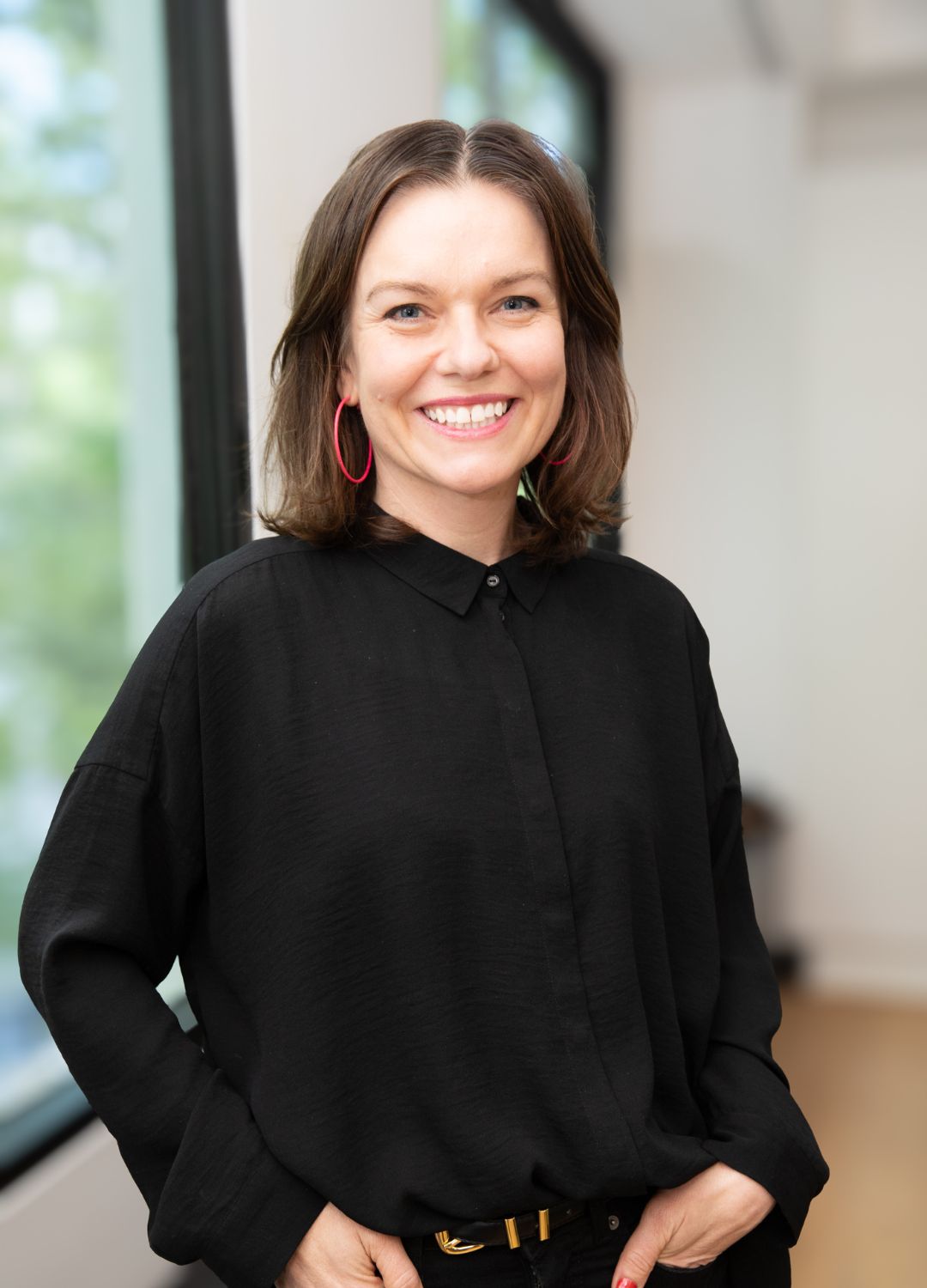
Looking to hire top talent
 or advance your career? Let's talk.
or advance your career? Let's talk.
We connect exceptional firms with talented professionals.
Let’s discuss how we can help you achieve your goals. Get in touch with the team today.
Related Posts

Bespoke Careers is proud to support this event celebrating people-focused achievements in architecture, highlighting sustainability, workplace culture, and fellowship.
Anticipating future hiring needs can be challenging for an architecture firm or design studio. Employers can always benefit from recruitment planning, even before new vacancies materialise.
Whether you have a large project on the horizon or not, the need to recruit employees will fluctuate at times. Having good practices and strategies in place can help you be more agile when new staffing requirements arise.
From studying at Yale to leading global megaprojects like Changi Airport and Hudson Yards, Forth shares what’s changed in the profession, why architecture is a service business, and how to lead without losing the joy in design.




